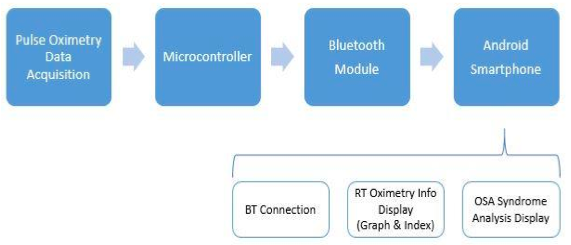Projects:2018s1-118 Design of Wireless Sensors for Sleep Apnea Detection
Project Group
Supervisors: Dr. Said AI-Sarawi Prof. Jagan Mazumda
Members: Hanzhi Gao & Jie Yang
Introduction
Sleep disorder diseases not only have serious negative effects on public safety and social economy, but also bring troubles to the lives and health of patients. In order to attract more people to pay attention to sleep and health issues. "World Sleep Day" is designated on March 21st annually on which all countries in the world hold related activities related to sleep and health. The governments have continuously promoted the education and popularization of sleep health knowledge so that more people can learn about sleep medical sciences.
The aim of this project is to derive and design a detecting method based on sensor technologies which can be integrated with wireless interfaces to communicate with a mobile terminal, which therefore conduct sleep apnea measurement in a less invasive way as the priority. The additional but also essential requirements for it are to quantify the sleep apnea syndrome in efficient and accurate way, as well as the low power consumption of the devices for longer-period usages. It allows one to undertake preliminary screenings at home by using simple electronic device.
Background
As an important branch of the digital signal field, the study of biomedical signal processing theory and technology directed by scientists and technicians with great focus. The commonly known "snobbing", is medically known as "Obstructive Sleep Apnea Syndrome (OSAS)", which refers to the sound of nasal respiratory airflow that blows the soft palate of the pharynx and the vibration of the pelvis in the sleep. In addition to the sound loudness, it is often accompanied by different degrees of OSA syndromes. Early detections and preventions of cardiovascular complications of OSAS is of great significance for health and life. Because OSAS is extremely hazardous, if not treated properly it may cause other diseases, such as high blood pressure, diabetes, breathing failure, cardiac arrhythmia, coronary heart disease, ischemic stroke, cardiovascular, cerebrovascular disease and mental illness.
However effective methods of early diagnosis are limited nowadays. Patients often put attention and receive treatment upon having clinical symptoms and hence miss the best timing of treatment, which leads to leave unresolved complications. It is therefore desired to have sufficient preliminary detections. Traditional hospital physical examinations can only be used as a periodic physical examination, as the inspection items are cumbersome, invasive, and costly, as well as the examination and the waiting time consumes long time period. As a result, it is not suitable for bedridden patients and patients who need frequent examinations for long-term use.
With the increasing attention to wearable devices, more and more wearable products are rapidly developing and emerge in the market. The market for wearable devices is opening up for consumers to have exposure and understanding towards it, and result in an increment of interest and acceptance of wearable devices. "Wearable devices" refers to the application of various advanced sensor technologies to intelligently transform daily wear and develop intelligent wearable devices with various functions and forms. Among which, the development of applying mobile health medical care to practice, forms a milestone for mobile phone detection of physiological parameters and received good social repercussions.
Common Methods
1. Polysomnography (PSG)
The standard diagnostic test for OSA syndrome is overnight polysomnography (PSG) which includes electroencephalogram (EEG), electrocardiogram (ECG), electro-oculogram (EOG), chin electromyogram (EMG), measurement of chest wall movement and airflow measurement The apnea—hypopnea index (AHI) derived from the PSG is then used to diagnose the disease. The patient has to undertake various sensors and wires for measurement. It’s not only non-portable, expensive and invasive, but also seldom used in ordinary families and requires a human expert to monitor the process overnight.
2. Blood Oxygen Saturation
Hemoglobin is a binding protein found in human blood. It is mainly used to transport oxygen and carbon dioxide dissolved in the blood. Reduced hemoglobin can combine with oxygen to form oxyhemoglobin where oxygen levels are high. These oxyhemoglobins become reduced hemoglobin and release oxygen at locations where blood oxygen levels are low for utilization by tissue cells. The oxygen saturation (SaO2) that we want to measure refers to the percentage of oxygenated hemoglobin (HbO2) that is the total binding hemoglobin capacity, that is, the blood oxygen concentration in the blood. Oxygen saturation is an important physiological parameter for many diseases.
The pulse oxygen saturation (SpO2) was measured using the oscillation method. The absorption coefficients of oxyhemoglobin and reduced hemoglobin in blood differ for different wavelengths of light.
3.Accelerometer-Based Body Position Monitoring
As a portable system that records only one biological parameter for sleep apnea screening, inexpensive accelerometer is of interest that can be used for home screening. The accelerometer screening technique usually extracts a dominant acceleration signal component for analysis, followed by extraction of breathing signal. Hence identify approximate breathing and non-breathing zones in order to identify OSA zones if exist. The selection of best mounting position is chosen as the suprasternal notch.
